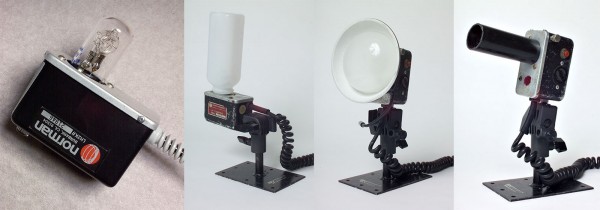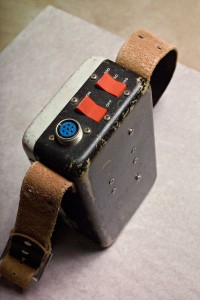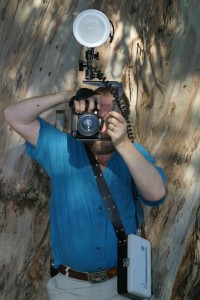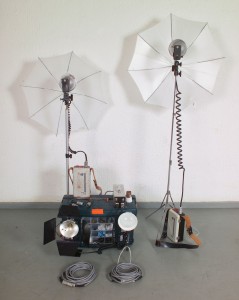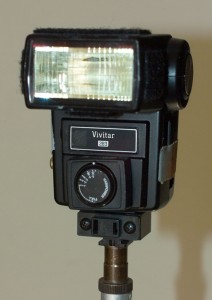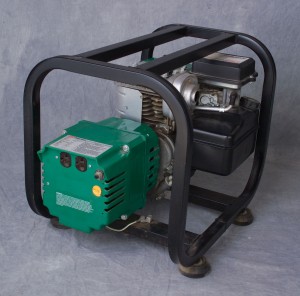My books and my classes give me a reason to keep doing this blog. If you’re in Indiana I hope you’ll consider taking my Portfolio Workshop. You can see a little more information about this workshop if you check out this blog post . I’ve listed my BetterPhoto classes at the end of this post. Thanks so much for your attention.
I’m a junk man. I think that it’s better to have more gear than newer gear. So I have a lot of Norman 200B strobes. Norman 200Bs haven’t been made in about 20 years, long time. Norman still makes a 200C, which costs about $1200, while a used, well used, 200B can be had for around $100 on eBay. So, if I can find them I can get a used unit for less than 10% of a new one. The used one weighs more, which is too bad, but it has some actual advantages. The 200B recycles quicker than almost any other strobe; the best 200Bs recycle to full power in a second. Norman 200Bs use 12-volt power, so you can run one off a cigarette lighter socket in your car, you can use a cheap lead acid 12V battery, you can even use a car battery. I don’t know of any other strobe that has so many inexpensive power options. A Norman 200B is pretty powerful, with a guide number around 114 with a standard reflector. The thing is that a Norman reflector spreads light a lot wider field than a Canon or Nikon strobe. The reflector isn’t built in so there are a lot more ways to modify the light, you can even use the bare tube (bare bulb) alone. I’ve also checked and with a big soft box, say 3X3 foot the 200B is about the same brightness as the much more expensive Canon or Nikon units. Now a 200b, even a 200C is a manual strobe: you can control the output, but the strobe won’t automatically change the output. If you’re designing the light for your shot this won’t be a problem, but if you want to have the flash make your choices a Norman 200B, any manual strobe, is not the way to go.
If I’m shooting interiors, for an architect or a designer I’ll take 7 of the 200B strobes with me. There are so many places that you might need to put light when shooting interiors, so sometimes even 7 strobes isn’t enough. It’s better to have a lot of strobes, even if they’re junk, than not enough lights. With architectural lighting power isn’t as important as having light where you need it. If I was shooting people or product I might not take as many lights, but I would still grab the 200Bs first.
If I’m shooting an event, and frankly I’d rather not, I grab a different strobe: the Sunpak 120J. Another piece of old junk. A 120J has a little more than half as much power as a Norman 200B, but it has automatic exposure! This is an earlier version of strobe automation, not the current ttl system. Still it’s accurate most of the time. Here’s a couple of things I like about the 120J: it uses the same strobe tubes as a 200b and the same reflectors. It can hold its own batteries or use a high voltage battery pack. Also it mounts on a hot shoe or a 1/4X20 thread. Oh yeah, they’re cheap, well reasonably priced. Quantum made some similar units that are worth checking out. The current Quantum strobes are probably worth having if you shoot a lot of events.
There are a couple more classic (old) strobes I should mention, first the Vivitar 283. They made millions of these and you can consistently find them for less than $30. I owned a couple of these modified with an extra capacitor to have a stop more power and there were a lot more modifications and accessories. The high voltage battery packs were really quite helpful because they reduced the recycle time a lot. Another strobe from the same time period is the Sunpak 411. I still use these because the head was so well designed it moved up and down as well as side to side. Unfortunately you don’t often see a 411 in good shape.
Of course there are a lot of other good used strobes available, and I should mention Lumedyne in particular. These are manual strobes, similar to the 200B, but can produce much more light. With the right accessories you can get up to 2400watt-seconds from these battery powered units. Lumedyne strobes are available new and used, and a little pricier than the Norman 200B. Still if you need battery powered strobes with as much light as a studio strobe this might be the way to go.
If you need a lot of light on location there are a couple of ways to go. First there are battery packs that you can plug a mono-light or a studio strobe into. Many companies offer these now, and they can be quite helpful. I prefer to use a gas generator. While it is much heavier you can shoot all night and day with just a few gallons of gas! Of course you may need an assistant to lug the thing around. Gas generators start at less than $150.00, batteries for mono-lights are generally more expensive.
d/I could discuss the new stuff on the market, but not in this entry. There’s a lot more information about strobes in my book: Understanding and Controlling Strobe Lighting: A Guide for Digital Photographers
If you’re interested in how to light interiors and other architectural shooting you might want this book: Photographing Architecture
Or you can check out my classes at BetterPhoto:
An Introduction to Photographic Lighting
Portrait Lighting on Location and in the Studio
Getting Started in Commercial Photography


